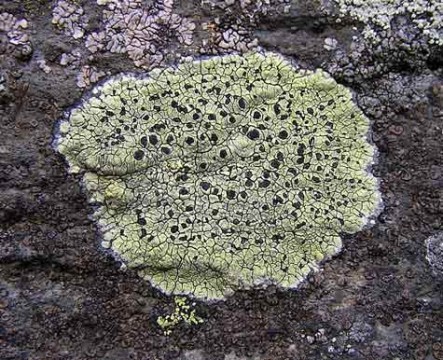Forgotten Flora
Blogger: Forest & Bird’s Web Manager, Mandy Herrick
I have recently become re-aquainted with one of the most overlooked wonders of this world: the lichen.
If you leave an object undisturbed, and wait, and wait, and wait some more, the lichen world may slowly colonise it – turning its dull surface into a tie-dye of pistachio greens and lurid yellows.
Arctic tundra, ancient cemeteries, inhospitable cliffs, unused roads, volcanic faces have all been painted in this way – but yet, we rarely give a thought to these botanical curiosities.
Lichens can sustain life in godforsaken places that seem completely absent of all of life’s necessities.
Foul winds, baking heat, water-free conditions, sub-zero temperatures – you name it, they can weather it.
When the conditions aren’t quite right they can lapse into metabolic suspension, allowing them to tolerate long periods of desiccation, or even radiation.
In fact, in 2005 the European Space Agency wanted to test the possiblility of lichens living in another cosmic zone, so they shot a couple of species into space.
The capsules in which they were contained were opened and they were exposed to the vacuum of space, -20C temperatures and extreme ultraviolet radiation.
After 15 days they were brought back to earth – and were completely unscathed.
It is estimated that about 600 million years ago, this algae-fungus composite formed, but it still remains a mystery how this symbiotic relationship came about.
The fungi part does the job of retaining water, capturing mineral nutrients and provides the reproductive structures, while the algae creates nutrients through photosynthesis.
For lichens, the window for photosynthesis is short – it’s only when the right combination of moisture and sunlight come together – and this maybe for just a couple of hours a day.
Needless to say, they take an unhurried approach to life.
One of our slowest growing species is R.geographicum which expands at 2-20mm per century. A lichen the size of a 50 cent coin is probably older than your grandmother.
Lichens take nearly all forms of the colour spectrum – from powder blue, bright yellows and forest greens and they’ve been used to colour everything from the robes of dignitaries to the tweeds of horsemen.
The 18,000 species that dress the world have been used to create perfumes, jelly, antibiotics, antifungal compounds and even bread! And scientists are now looking to use them in anti-cancer treatments and the next generation of sunscreens.
Despite being incredibly robust they have one Archilles heel. They derive most of their nutrients from the air making them particularly sensitive to pollution. However like the miner’s canary they can act as cheap early warning system.
In one such case in New Plymouth lichen-growth was studied around the surrounds of an aluminium smelter – it was a lichen desert, so the company had to fork out millions to clean-up the air. A couple of years later a lichen forest began to flourish.
Since discovering the truth about these amazing environmental ‘canaries’, geological clocks & botanical pioneers, I no longer treat lichens with indifference – instead they’re objects of wonder.
Indeed, my next lichen-ogling trip is going to be to Auckland’s Rangitoto island – a lichen mecca.
This inhospitable volcanic cone is home to 194 species of lichen – these hardy botanical founders drifted over, attached themselves to rocks and created a humus that eventually gave life to blazing stands of pohutakawa.
In short they’re a-mazing.
To finish this blog, I tried to do what many lazy writers do when, ergh words escape them – you reach for a quote.
Better to get some literary type, or wordy botanist to wrap these marvellous things in luscious words rather than end on a note that’s trite.
But perhaps unsurprisingly, Google yielded very few quotes about this forgotten flora. And the only one that came up was downright inflammatory and wholely untrue given the lichen’s 18,000 forms and its domination of the world over.
“Consider the Lichen. Lichens are just about the hardiest visible organisms on Earth, but the least ambitious.”
Bill Bryson.
Unambitious? Puh, the lichen is going interplanetary – it may even be used to colonise Mars!

